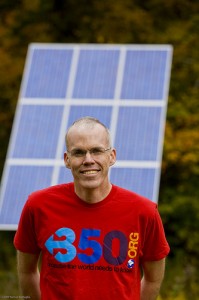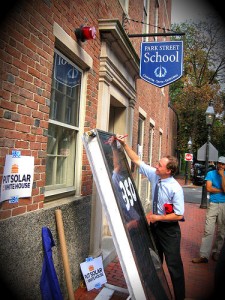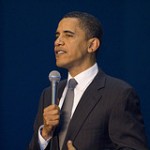In the 2011 State of the Union Address, President Barack Obama highlighted many goals as part of the administration’s “winning the future” campaign. Energy efficiency was one such goal, and last Thursday the President, speaking at Penn State, unveiled the Better Buildings Initiative, a plan for a 20% improvement in energy efficiency in commercial buildings by 2020. It’s no coincidence the plan was reveled at Penn State, a school with more than 500 researchers working on energy and environmental studies. The President touted Penn State as a leader in the research towards a clean energy future.
The initiative also strives to reduce companies’ energy bills by $40 billion per year. The plan aims to achieve these goals through a number of different approaches, including tax incentives, loans, and challenges to turn the private sector towards the mind set that clean energy is a worthwhile investment.
In the plan, five main points are presented to achieve these goals.
- Tax incentives – A call to redesign tax code, this would create more incentives through tax breaks and credits for businesses to make energy efficiency improvements to their properties.
- More financing opportunities – Through a recent increase in loan size limits, the Small Business Administration is encouraging current lenders to promote loans made specifically for small businesses to improve the efficiency of their buildings. Also, a new pilot program is proposed in the President’s budget that will guarantee loans for improvements on hospitals, schools, and other commercial buildings.
- Promote state and local governments to encourage energy efficiency in the private sector – The President’s proposed budgets will include new competitive grants for state and municipal governments to encourage the private sector to invest in energy efficiency upgrades to commercial buildings. This is important because many codes, regulations, and standards on commercial energy efficiency are set and controlled by state and local governments.
- The Better Buildings Challenge – The President will challenge CEOs and University Presidents to become leaders in the movement of commercial building energy efficiency by making those leading the way eligible for benefits that include public recognition, technical assistance, and access to “best-practices sharing” within a network of like minded peers.
- Training the next generation of commercial building technology workers – The plan looks to provide more transparency around energy efficiency performance, and provide better training in energy auditing and building operations.
To show the government is truly behind its aspirations for energy efficiency, President Obama issued an executive order to federal agencies, directing them to achieve zero net energy by 2030. Among the requirements, all new constructions and alterations must employ high performance and sustainable design principles. As a mark of progress of this Executive Order, at least 15% of existing federal buildings must meet these principles by 2015.
As for the energy efficiency in the homes of American families, this particular plan does not touch on the subject, but it builds off of the proposed “HOMESTAR” legislation, which encouraged Americans to make energy saving upgrades to their homes. While the house passed the Home Star Energy Retrofit Act of 2010, it never came to vote in the Senate. The President says his remains committed to passing this legislation.
As 2012 approaches, President Barack Obama will be starting to campaign for reelection in the coming months. Look for energy efficiency policy to be a big part of his “winning the future” campaign unveiled during the State of the Union Address last month.


 Under mounting pressure from 10-10-10 groups, 350.org’s Bill McKibben, and various other environmental activists, the Obama Administration
Under mounting pressure from 10-10-10 groups, 350.org’s Bill McKibben, and various other environmental activists, the Obama Administration  Beginning September 7th,
Beginning September 7th,  President Obama will be speaking in Cambridge at
President Obama will be speaking in Cambridge at 